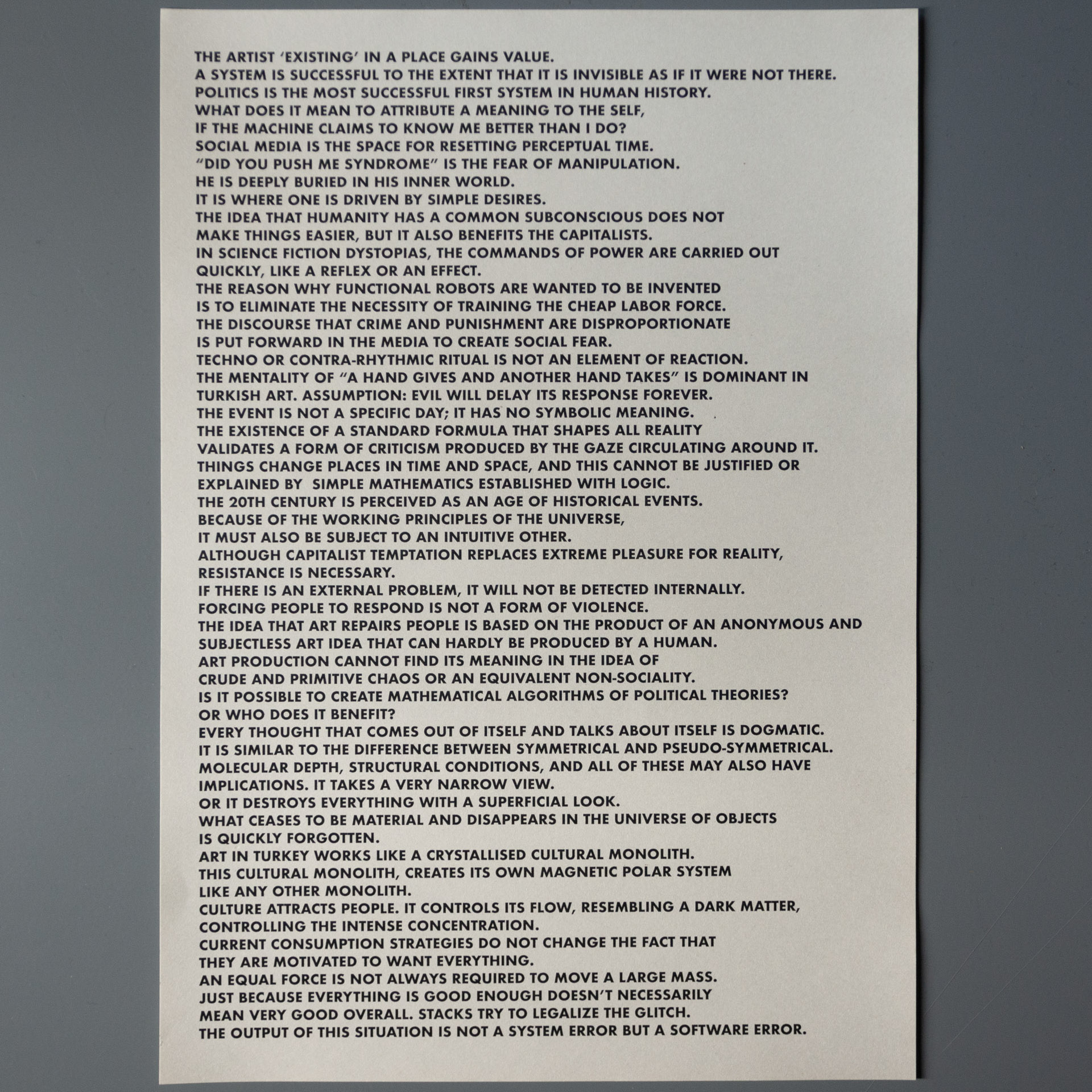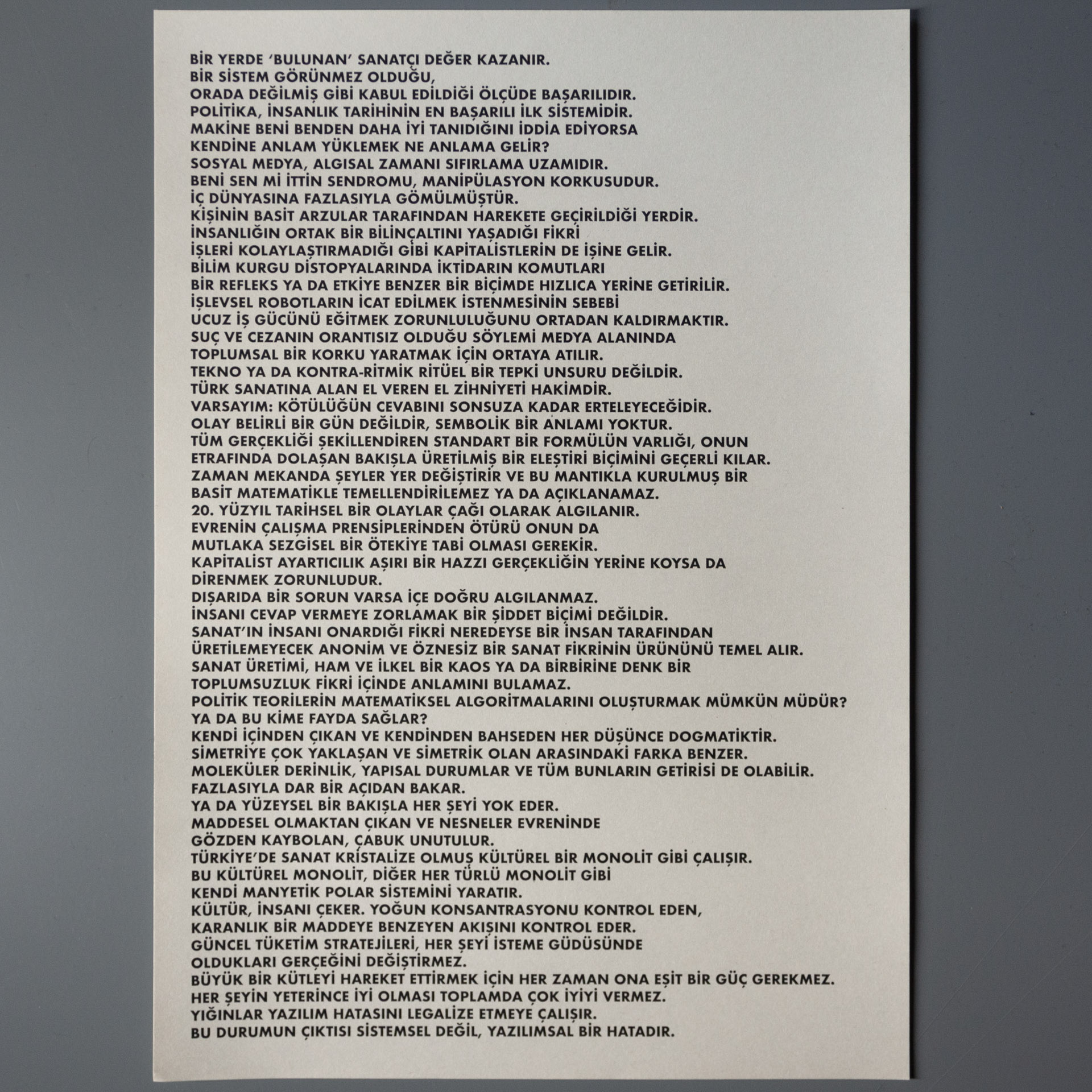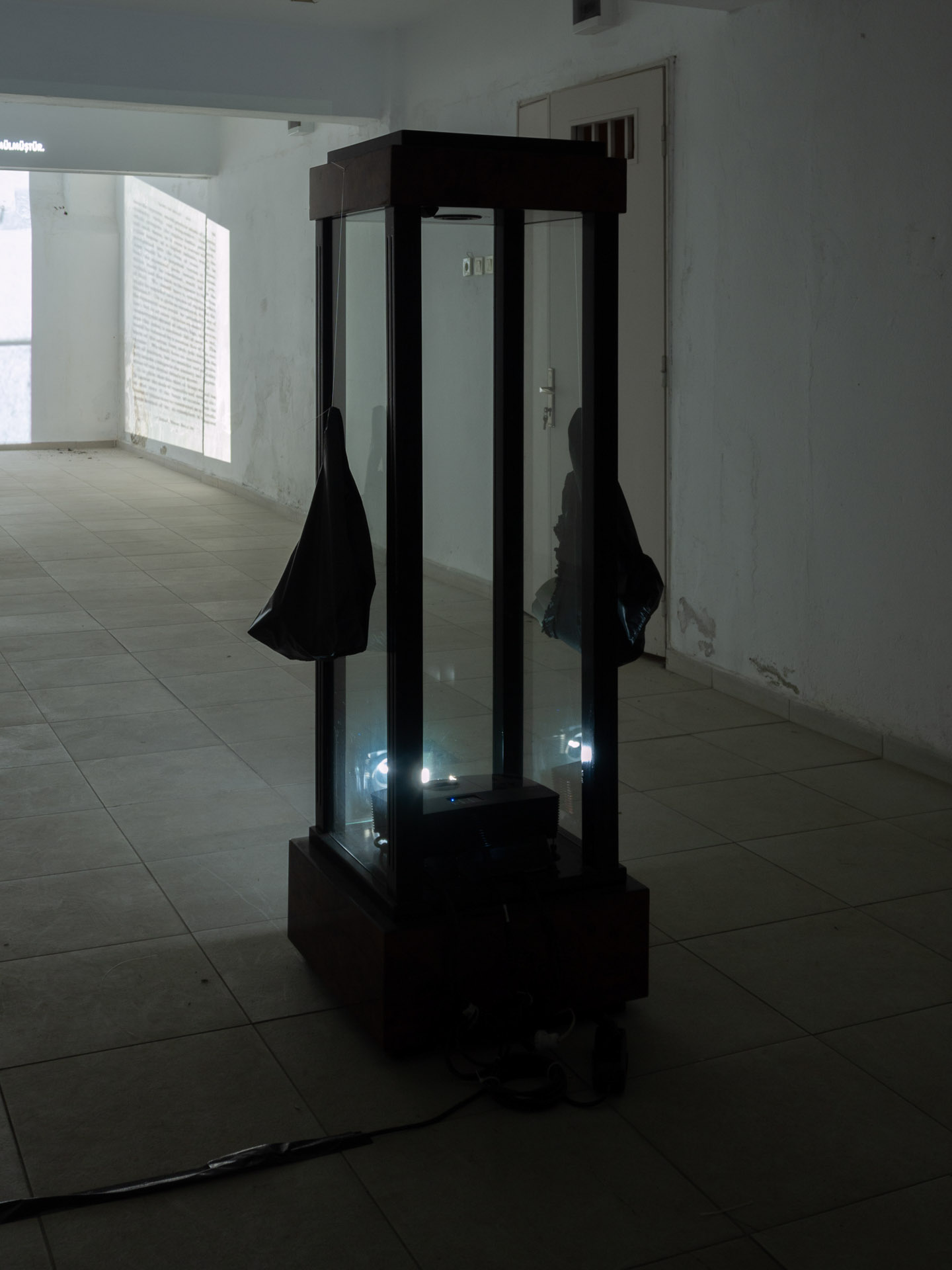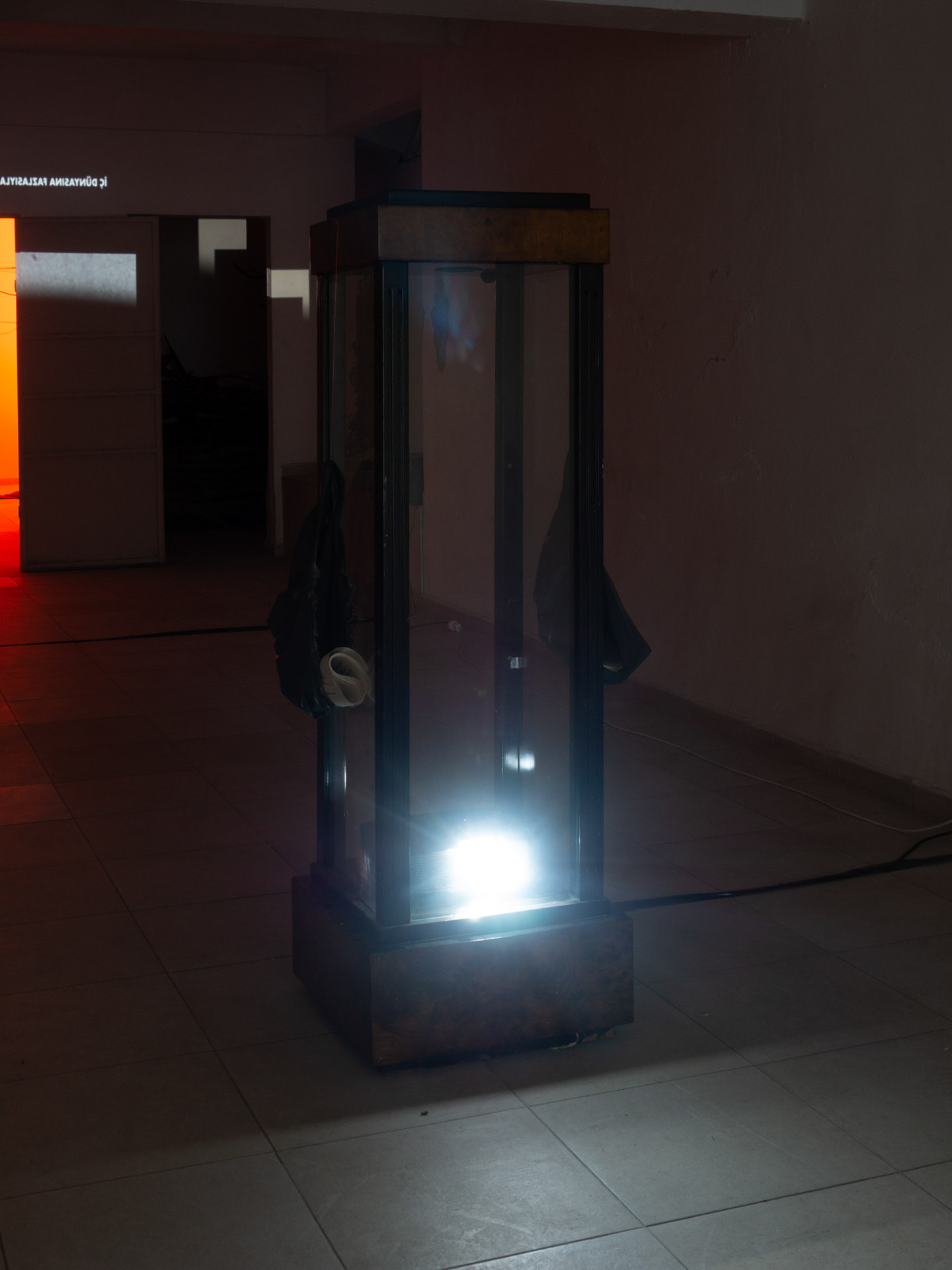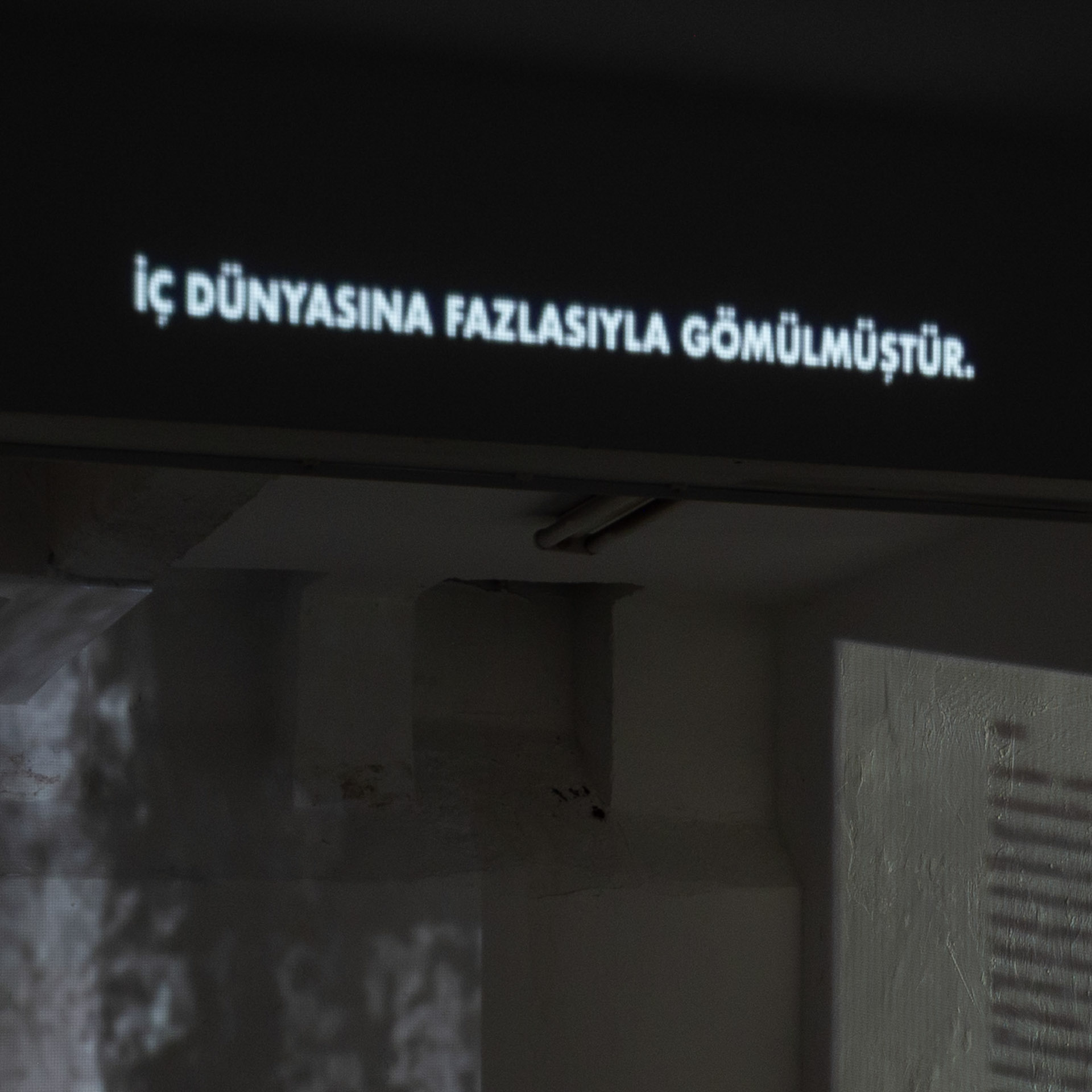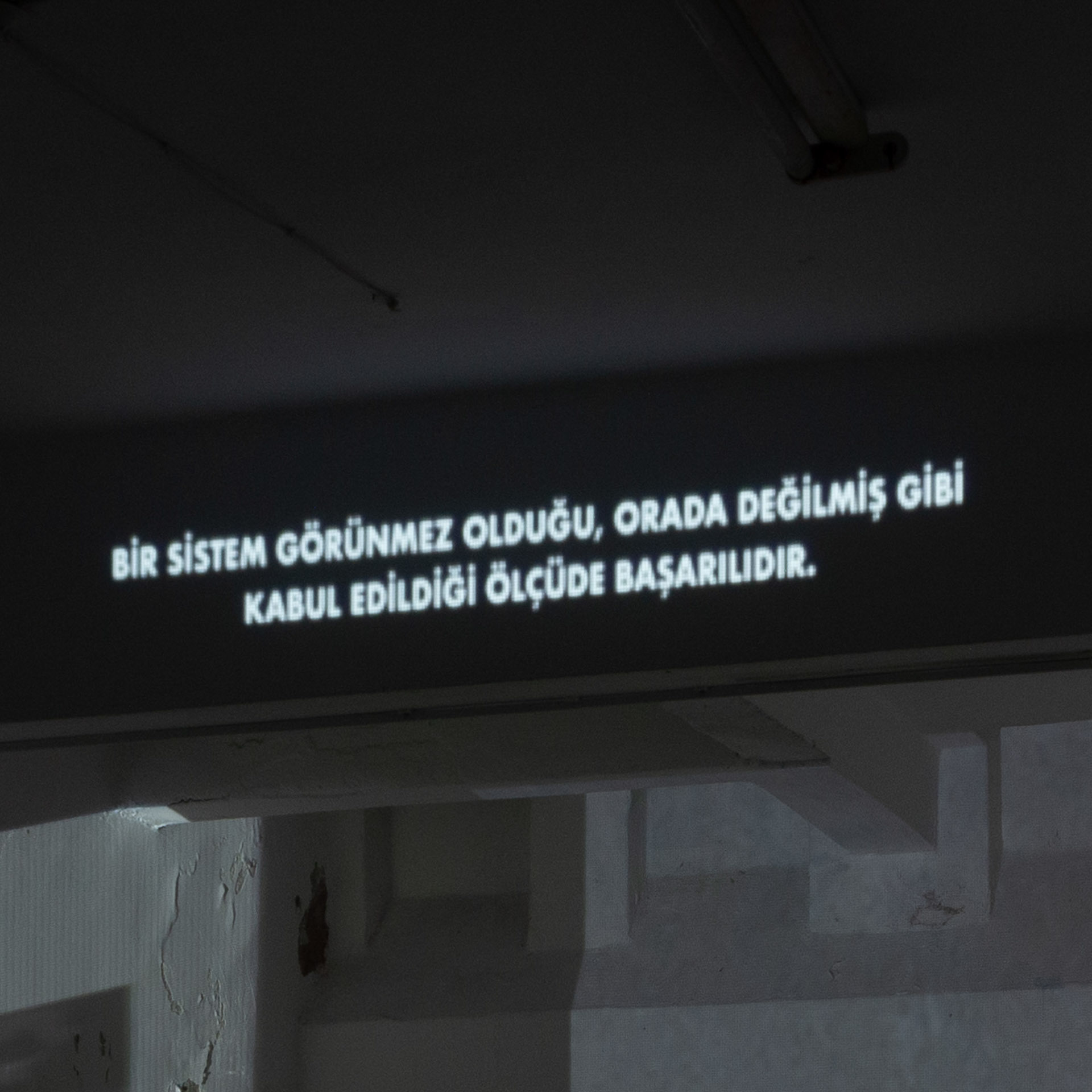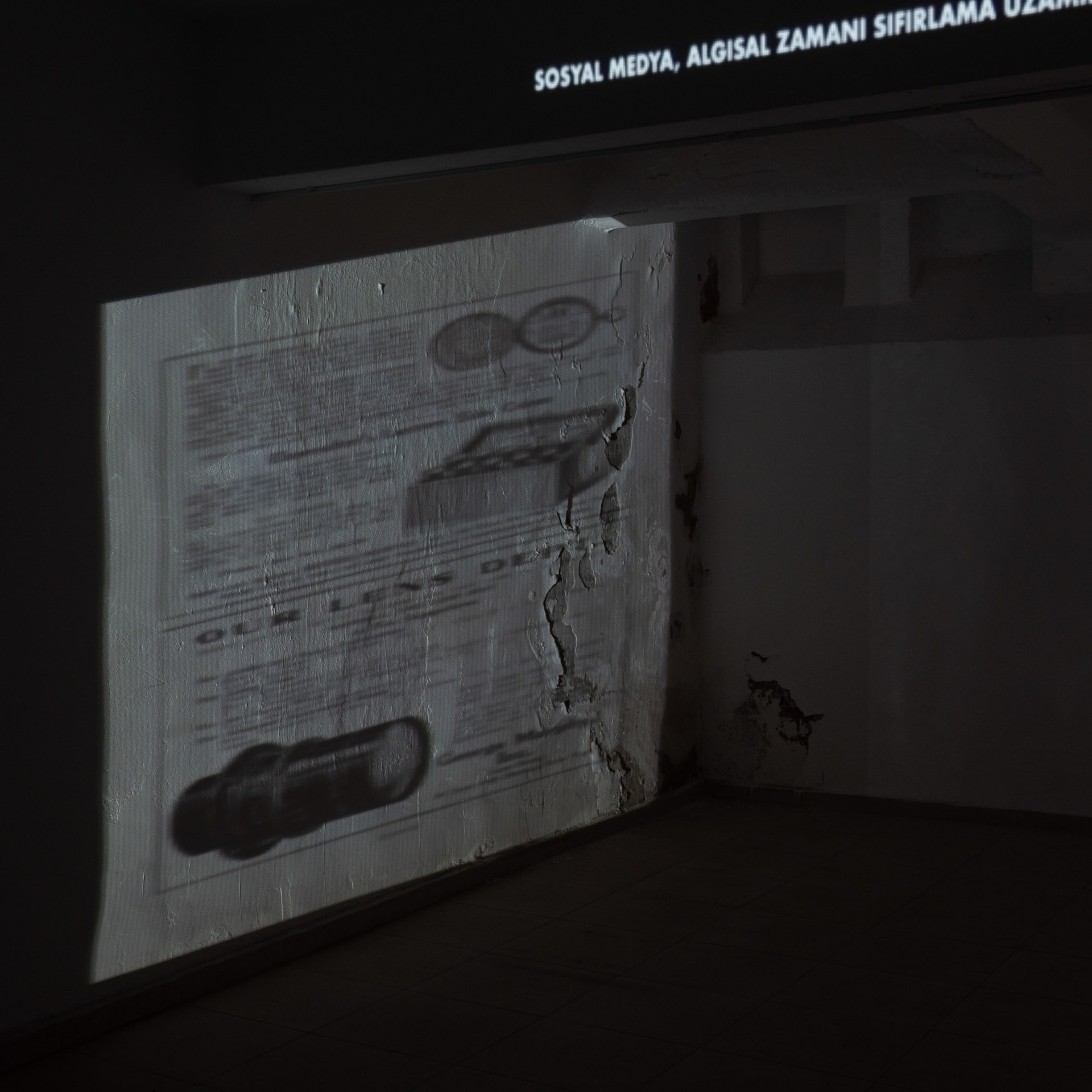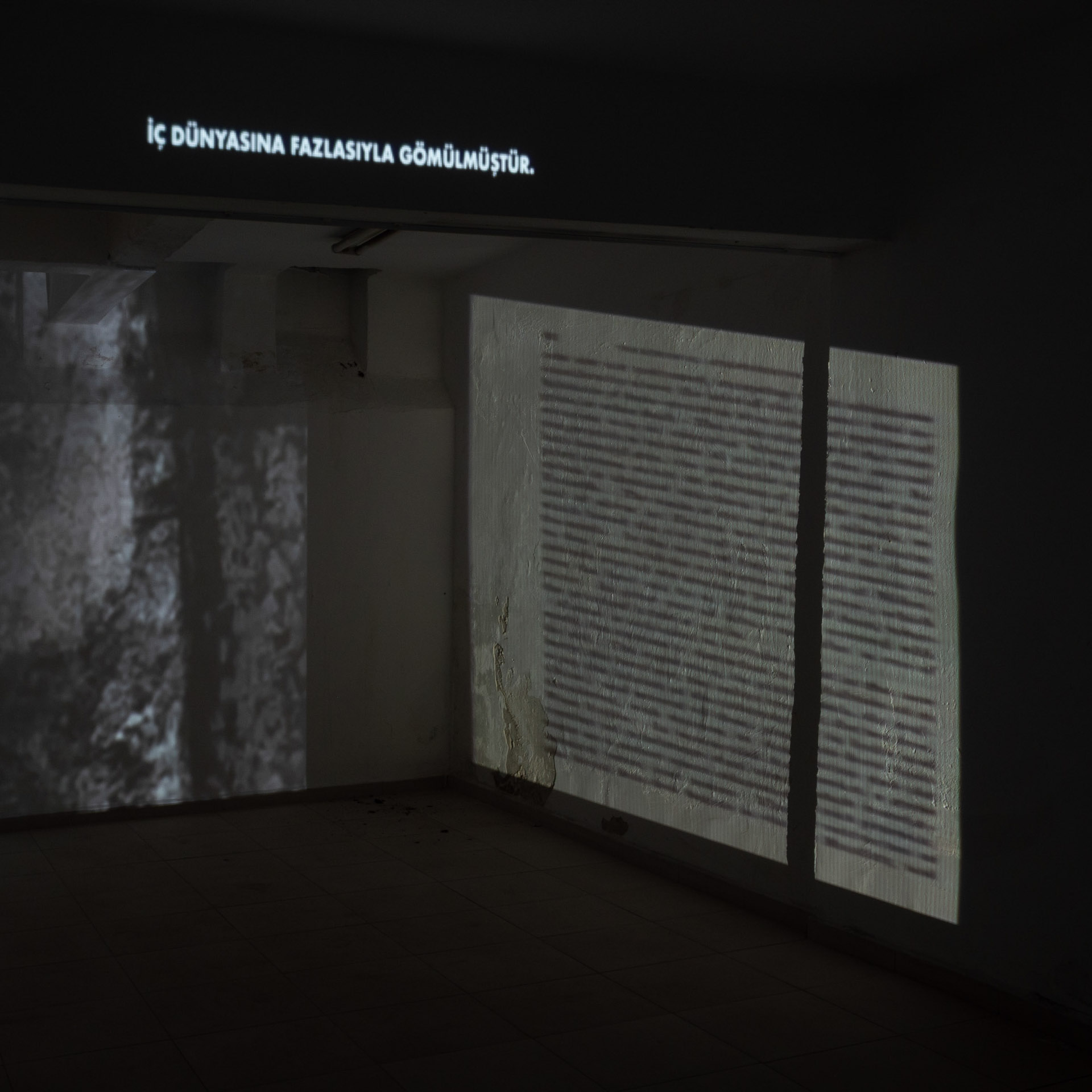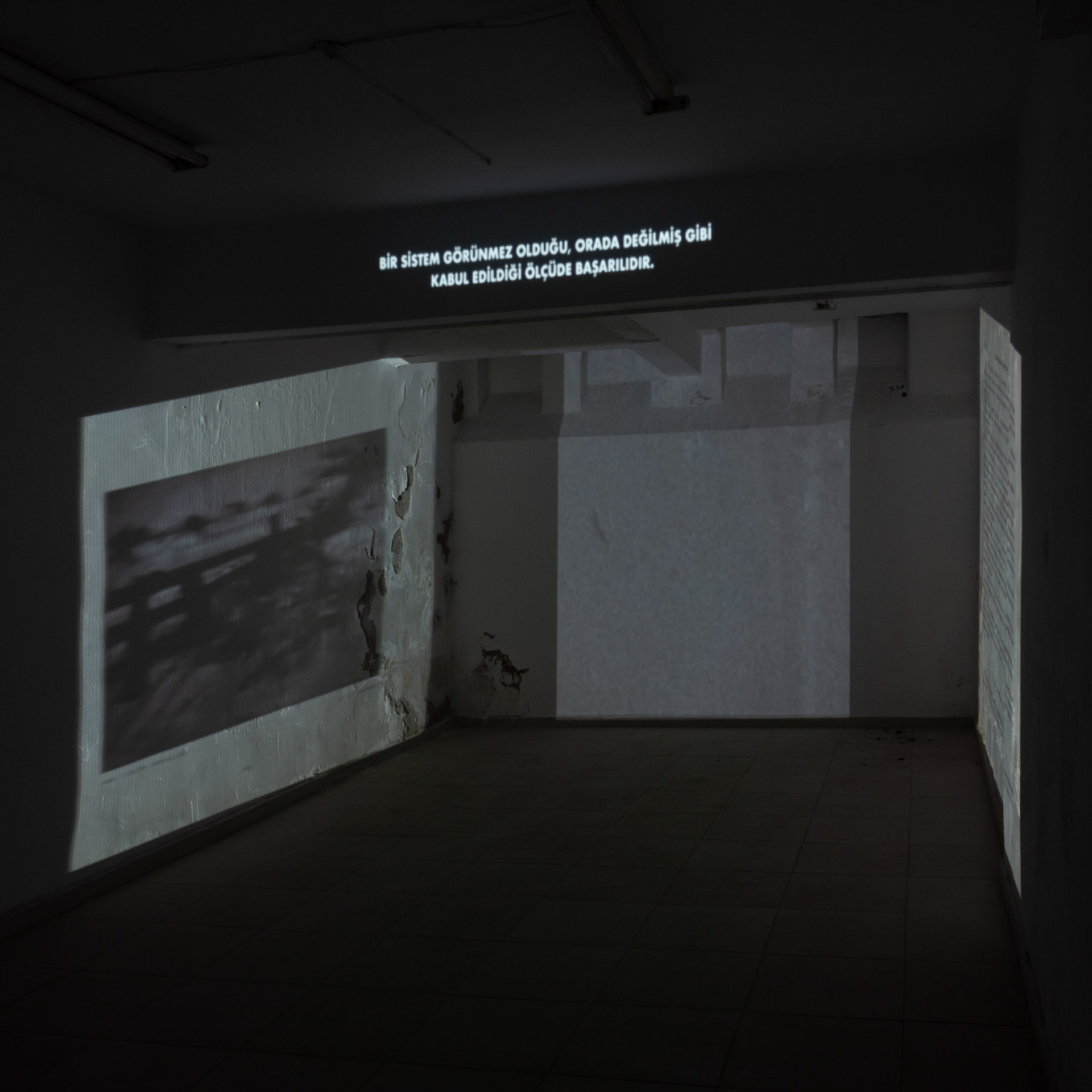Is it a manifest? I am not sure!
Installation: Single Channel Mapped HD Video Loop, Manifesto Text
2021
Is it a manifest? I am not sure. emerges as a fragmented interrogation of the manifesto’s traditional authority—a form historically bound to declarations of certainty. Here, the manifesto splinters into a constellation of ephemera: a video piece dissects its own rhetoric, printed texts dissolve into artifacts, and the architecture of a basement in Istanbul’s Barın Han becomes a site for porous dialogue between public and private, permanence and erasure.
The video manifesto operates as a recursive echo chamber. Sourced from a single landscape photograph, its imagery fractures into tile-like units, each frame a pixelated terrain that oscillates between abstraction and representation. These fragments collide with scans of weathered, found books—their spines cracked, pages yellowed—interlaced with phrases extracted from the manifesto itself. Text and image enter a feedback loop: declarations on artistic agency appear superimposed over eroded landscapes, while scanned book margins dissolve into digitized static. The work refuses linearity, instead inviting viewers to navigate a labyrinth of mediated memory—a commentary on how ideas calcify or mutate as they pass through cultural substrates.
Printed texts, stripped of their digital ephemerality, assume tactile urgency. Xeroxed excerpts from the manifesto are sealed in jet-black plastic bags—opaque, crinkling, vaguely industrial. These objects rest ambiguously between gift and refuse, artifact and burden. Visitors might pocket them, discard them, or leave them suspended in the exhibition’s liminal space. The bags evoke both the protective casing of archival materials and the disposable shrouds of consumer waste, implicating the manifesto’s dual vulnerability: to preservation and to oblivion.
Installed in the basement of Barın Han—a labyrinthine historic building in Çemberlitaş—the work leverages the site’s subterranean weight. Exposed concrete walls, damp air, and the muffled hum of the city above frame the experience. Projected videos bleed into the uneven surfaces, their pixelated landscapes mirroring the building’s own scars of time. The basement, a space of storage and secrecy, becomes an apt metaphor for the manifesto’s contested status: buried yet potent, suppressed yet insurgent.
Created for “Atış Serbest: Mecmu” (2021), a group exhibition probing freedom of expression and collective memory in Turkey, the work engages Istanbul’s layered histories. The title’s hesitancy—Is it a manifest? I am not sure—reflects both the exhaustion of grand narratives in a fractured sociopolitical climate and the generative power of doubt. By dispersing the manifesto across media (digital, print, architectural), the piece rejects singular authorship, instead proposing a polyphonic “mecmu” (an Ottoman term for anthologies collecting disparate voices).
The black plastic bags, in particular, resonate with Istanbul’s streetscapes—ubiquitous in markets, protests, and domestic life. They become vessels for clandestine knowledge, echoing how subversive texts have historically circulated in oppressive contexts. Yet their fragility—prone to tearing, carried ambiguously—also underscores the precariousness of dissent.
Ultimately, the work asks: Can a manifesto be a question rather than a decree? A permeable entity that invites contamination? By hybridizing digital glitch and analog residue, it maps the unstable terrain where ideology meets materiality—where words, once unleashed, are subject to erosion, misinterpretation, and rebirth. The basement, with its shadows and echoes, leaves the answer unresolved, lingering like the afterimage of a disrupted transmission.

